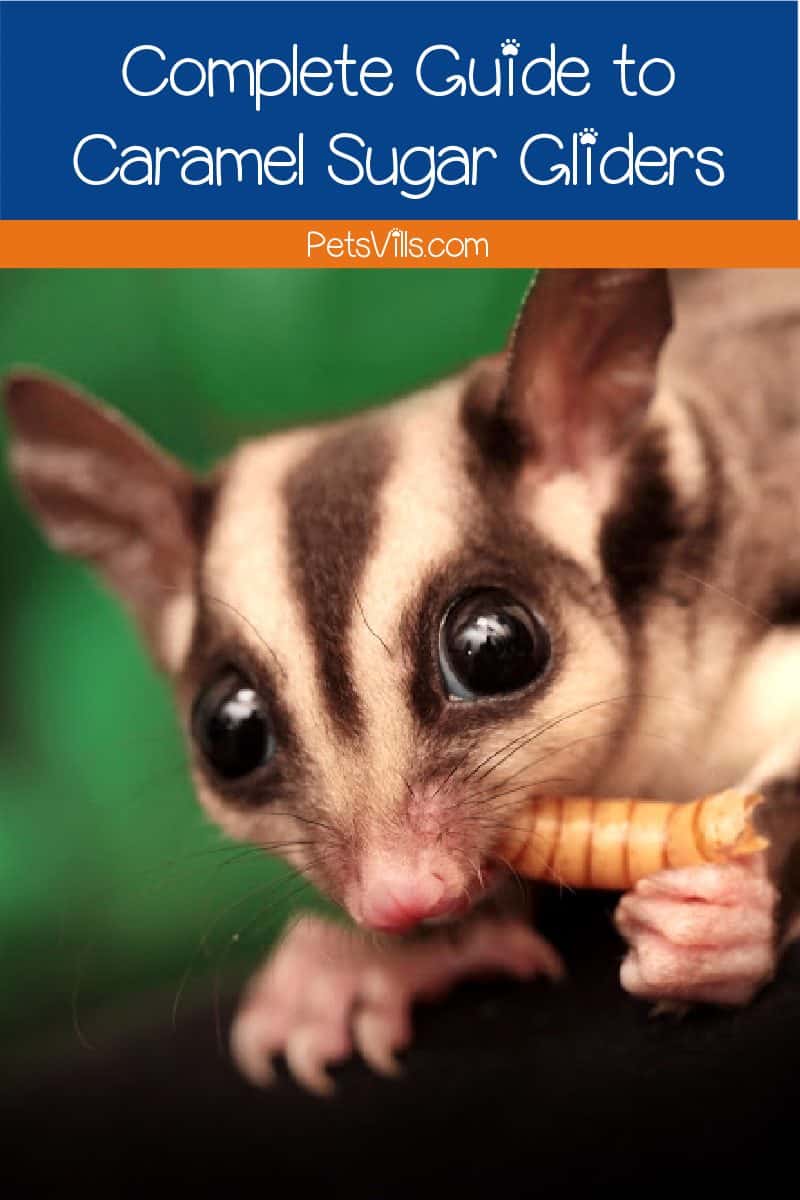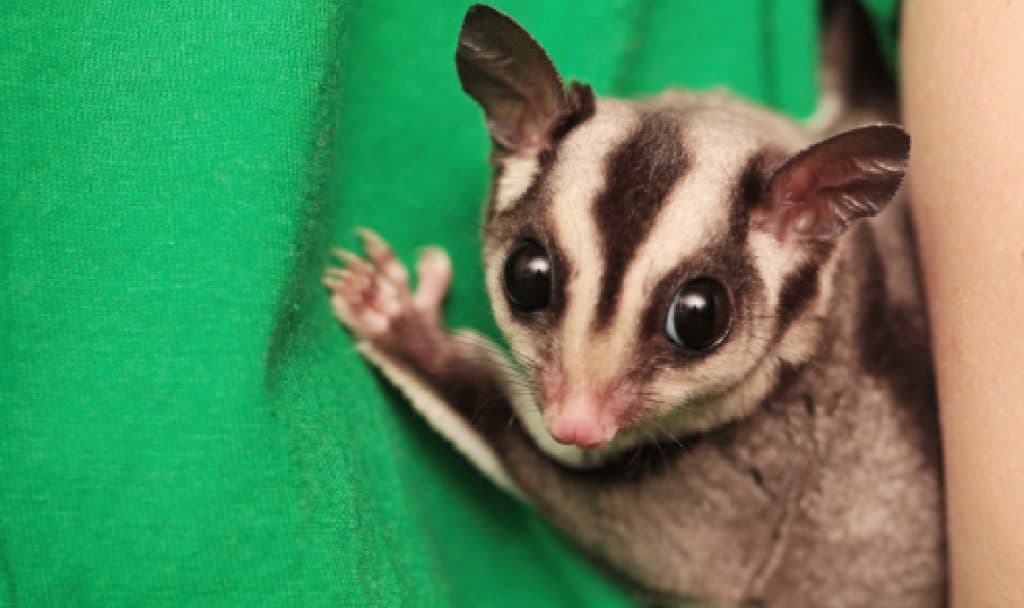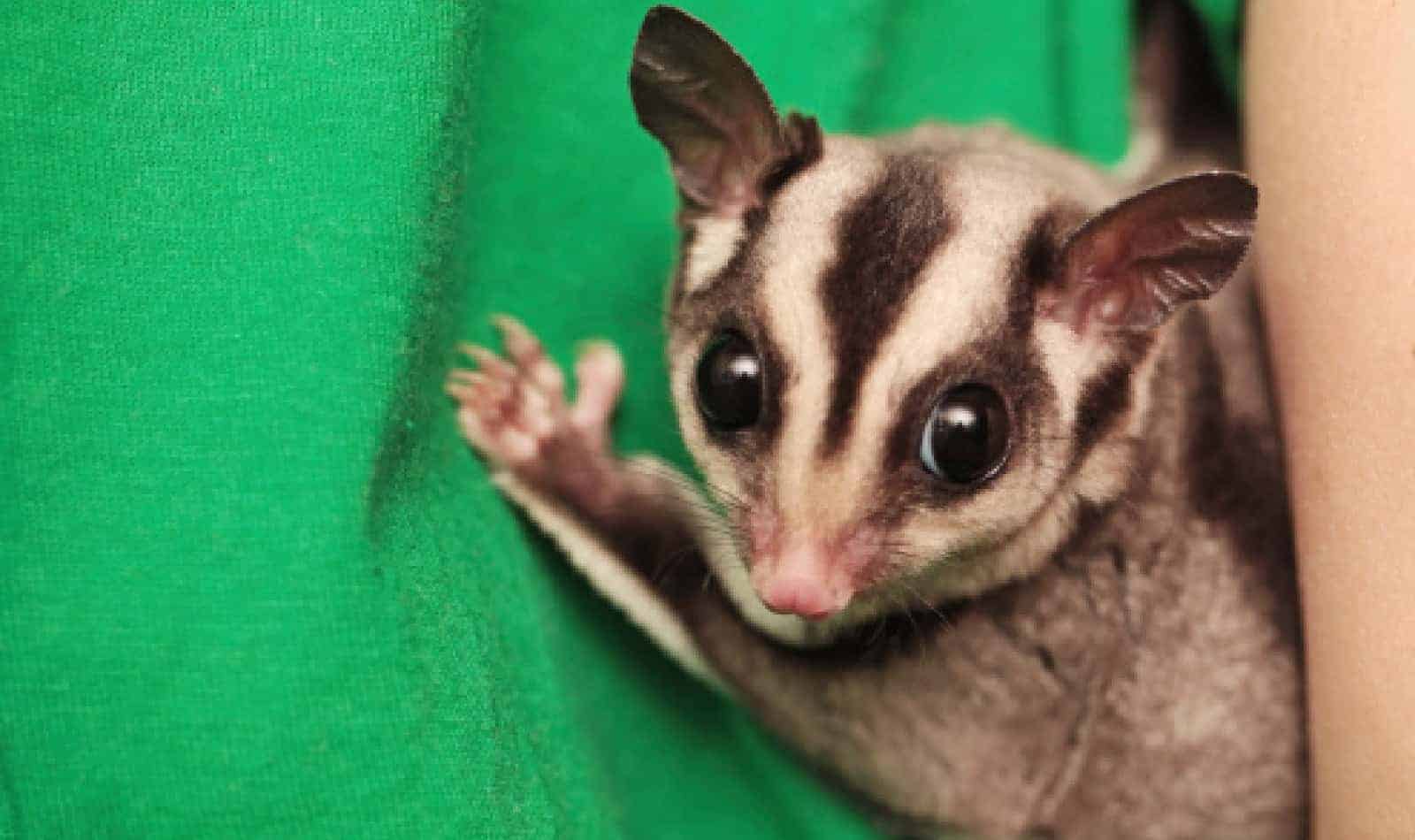Are you looking for more information about caramel sugar gliders?
This article will cover everything a person could want to know.
It’ll help you decide whether getting one of these adorable marsupials is the right choice for you.
Let’s now find out if you’re ready to be a caramel sugar glider owner!

Table of Contents
What is a Caramel Sugar Glider
The first thing to understand about these breeds of sugar gliders is it’s not a color.
Caramel sugar gliders are instead a unique subspecies.
These animals came onto the scene first when they were brought into the United States in October 2009.
As a result, pet owners often refer to them as a color of sugar gliders
Related: Black Beauty Sugar Glider
But their look is the one of a subspecies from Indonesia.
Experts aren’t too sure of their exact subspecies.
However, there’s one thing everyone knows: these aren’t compatible with any traditional gray sugar gliders within the United States.
If you do attempt to crossbreed them, it results in sterile males. This outcome is the last thing a breeder ever wants.
What does a Caramel Subspecies Sugar Glider Look like?
Caramel sugar gliders have a softer, lighter gray coloring, but they can be dark (champagne or light caramel-colored).
The darker body tends to be more prominent in ones caught within the wild.
Many of them will have significantly white hands that are larger than most gliders. You can expect their ears to be a little larger, as well.
These two features make them appear a bit bigger than other gliders.
Some experts even consider them to be about 20% larger than traditional sugar gliders.
Another distinct quality would be their very fluffy tails, which are generally in a curled position.
History of Caramel Sugar Gliders
As I mentioned earlier, Caramel sugar gliders were first imported to the USA in October 2009.
These beautiful creatures came from Irian Jaya, Indonesia, within the Merauke area.
It remains somewhat rare to see them in captivity, but their popularity has increased over these last few years.
Pet owners seem to like their larger frames and different color schemes than the traditional grays.
Of course, this increased popularity has lead breeders to begin worth with them more frequently.
I expect the amount of caramel sugar gliders to only increase in the upcoming years.
The video below is intriguing if you’re curious about sugar glider genetics and history!
How Much would a Caramel Sugar Glider Cost?
First, before you even consider buying one, make sure sugar gliders are legal in your state.
Some states have a ban on them because they’re exotic pets. The last thing you want is to adopt a glider only to find out you’re breaking the law.
If it is legal in your state, though, their popularity has made caramel sugar gliders relatively inexpensive.
Breeders have been to known sell them for around $350 each.
It sounds like a lot of money, but this price is much less than what most “rare” gliders end up costing.
Some of those subspecies and colors can cost as much as $5,000!
You can expect this price to vary on a couple of factors, though.
Breeders who breed caramels specifically are more likely to have lower prices. It will ultimately depend on their location and who’s sell them.
Location tends to have the most impact on a glider’s price. For instance, a breeder that’s selling the only caramels in a specific area can charge more.
Someone who competes with other 5 or 6 breeders would have lower prices.
RELATED ARTICLE: Albino Sugar Glider for Sale
Try adopting before shopping
If at all possible, please consider looking into shelters and glider rescue groups.
As with all trendy and unique pets, people adopt them before doing research, only to find that they can’t handle caring for them.
Just last week, CBS Boston ran a story about dozens of gliders up for adoption at a local SPCA.
What’s a Caramel Sugar Glider’s Temperament?
Pet owners often seek out caramel sugar gliders because they’re known for their sweet temperament.
In other words, these animals are a bit calmer than traditional sugar gliders.
You might expect different because of their larger sizes. But caramels fit the phrase of “gentle giants” when compared to how other sugar gliders behave.
People have even found them easier to handle, which is a nice additional benefit.
Caramels have a better chance of building a lasting bond with their owner.
There’s no reason to believe these animals won’t become your best friend when given a ton of attention and love.
But like with any sugar glider type, caramels won’t be overly friendly to strangers. These gliders will clam up around most people who aren’t within their lives regularly.
It’s essential to keep them calm during these encounters by handling them. Their anxiety will become less of an issue as you’re holding them.
If you want them to meet a friend or family member, nighttime would be a good idea. But don’t force them unless they seem into it.
It’ll probably end with them peeing on the person, which isn’t ideal.
How To Care For a Caramel Sugar Glider?

Caring for a caramel sugar glider won’t require anything different than a traditional one.
If you follow the rules laid out in this guide, I do not doubt that you’ll be fine when taking care of one.
One thing worth considering is getting a bigger cage due to their size.
You may also need to feed them a bit more than their smaller counterparts, but we’re talking a small extra amount. Nothing too extreme.
Check out our guide to making healthy sugar glider food and choosing the best treats for more information on feeding time.
In any case, I’d recommend talking with your breeder about what’s needed care wise before taking them home.
You’ll also want to line up a vet that’s experience in caring for gliders either before or immediately after adopting your new pet.
I hope these discussions answered all your questions about caramel sugar gliders. If you have any more, please let me know in our comment section. Thanks for reading!
Do you have caramel sugar gliders? Share your thoughts & experiences below!

My name is Ben Roberts, and I absolutely love animals. So, naturally, I love writing about them too! As far as my animals, I have a Pit-bull, a Beagle-lab mix, a Chihuahua, and one old cat. Each one of them provides me with a new adventure every day. And the best part is they’re all best friends. Well, except the cat when he gets a little annoyed.
FIND HIM ON: FACEBOOK and TWITTER.
Read his latest ARTICLES
Learn more about Benhere



![Cute Sugar Glider Drinking From The Bottle [Must-Watch Video]](https://petsvills.com/wp-content/uploads/2022/09/Cute-Sugar-Glider-Drinking-From-The-Bottle-Must-Watch-Video-211x150.jpg)
